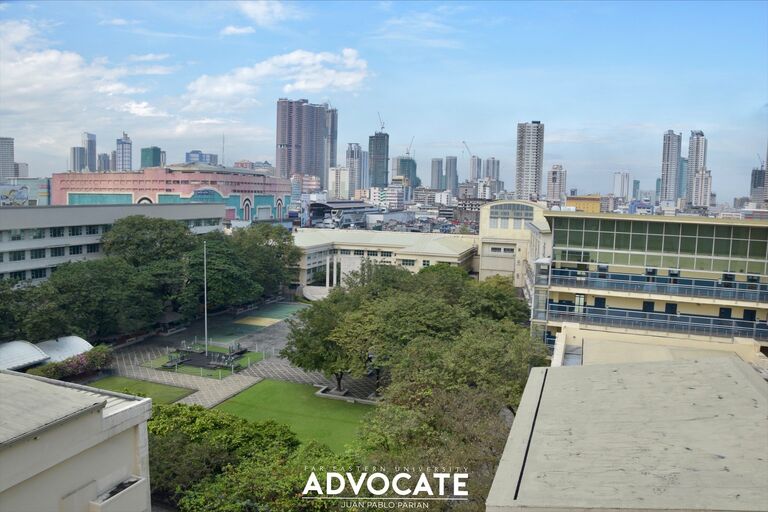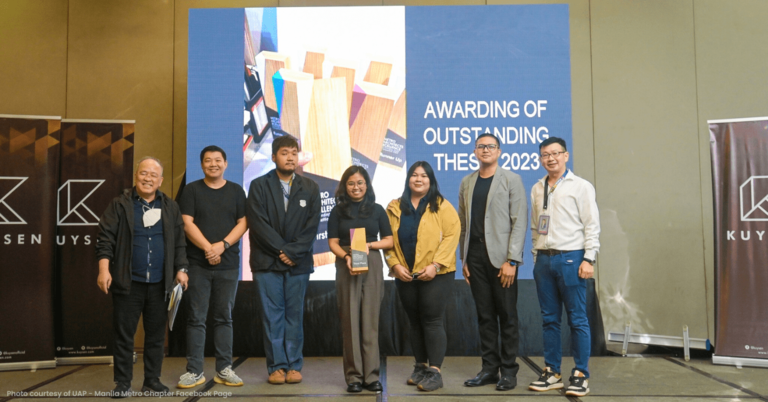
FEU dubbed first Asian university under D4TEP
- June 16, 2022 01:44
FEU Advocate
March 30, 2024 08:43

It’s that time of the month where cases of fire disaster proliferate due to the constant changing of weather. This change affects the temperature in our houses, raising risks of igniting a fire. As a result, this month was declared to be Fire Prevention Month to raise awareness among the citizens. However, despite raising awareness, there are still fire cases caused by accidents and negligence.
Far Eastern University (FEU) is located near neighboring houses and buildings in the streets of Morayta and España, surrounded by fire prone cities. The closeness of these infrastructures raises the risks of the rapid spread of fire such as in the recent Recto fire incident that affected 300 families and 150 houses. For this reason, it is not new for Tamaraws to hear sirens from fire trucks around the city.
As Tamaraws, it is part of our values to always help our society as much as we can. With the help of FEU Red Cross Youth Council (RCYC) Disaster Management Services and Safety Services, here is a list of tips to prevent fire and to know what to do when it occurs.
There’s no safer environment than a clean and organized surrounding. When we are at our house, it is inevitable to have so many things scattered everywhere, either because we are too busy to clean or because we are often outside. Although this is normal, it is a potential threat, especially at this time of the year.
These things that are scattered everywhere expose us to a higher risk of spreading fire when a small fire occurs. Thus, finding the time to declutter and clean our place at least every 3-4 weeks would provide not only an eye-pleasing environment but also a safer and calmer space.
Even though electrical cables are covered with safe wire covers, it is still considered as one of the most common fire hazards. More specifically, when the covers are damaged that exposes the wire from external risks.
Our houses have various cable connections so it can’t be avoided to not notice defective or damaged ones. These broken cables are highly at risk of overheating that can eventually affect the other cables surrounding it. Hence, it is important for us to make sure our cables are not tangled and are fully covered to prevent it from igniting a shock.
Fire is a fundamental tool that we use in our daily lives. This helps us cook, form glassware, ignite machines, and more. However, it is highly prone to risks that may start a disaster.
To be able to control and avoid this, we have to make use of it with caution. When we make use of fire, we should never leave it without anyone watching. Even if it is small, it can spread and get bigger.
In some instances, the things in our houses that may seem harmless can be one of the main reasons to start a fire disaster. An item that has always been deemed as safe may be our place’s downfall.
To avoid this, we have to look around our place and identify if our things are flammable because of its qualities or if our things are placed in a spot where it can ignite a fire and make it worse. This simple gesture is a good way to identify probable causes and prevent further damage when a fire occurs.
We live in a society where technology is constantly advancing, producing new materials and instruments beneficial to our everyday lives. Because of that, most appliances people use are electricity-based.
To make sure this advancement does not harm us, we have to be responsible consumers. When not in use, unplug the appliance to reduce the risk of overheating as it would eventually be the cause of a fire. Forgetting to do so puts us at risk and the neighboring houses that might get affected when it spreads.
In spreading awareness, organizations such as FEU-RCYC aim to have safety and health protocols that ignite prevention against disaster risk activities.
In an interview with the FEU Advocate, the Disaster Management and Safety Service Committee vice heads shared some experience and notes on encountering fire accidents and incidents.
When life and death happen, the first thing you have in mind is to survive. Rosie Jake Amargo, the Committee Vice Head of the Disaster Management Committee of RCYC, shared that assessing a fire victim, giving them first-aid, and securing them in a safe vicinity will be the first response.
“First, we ensure their safety by promptly relocating them to a designated safe area away from potential hazards. Second, we always ensure that every member of the family is present before handing them over to the medical team for a comprehensive medical assessment,” Amargo expressed.
The Vice Head of the Committee for Safety Services, Charlene Castillo, discussed that patient assessment is necessary for fire victims.
“First, we check for consciousness, airway, breathing, and circulation and evaluate their vital signs. Common injuries associated with fire victims include difficulty breathing and burns as they inhale smoke and sustain burns while escaping the fire,” she added.
Furthermore, in case of difficulty in breathing, the management after the primary assessment involves administering oxygen to the victim to stabilize vital signs.
Hearing the siren of the red fire trucks, the beat of anxiety and curiosity struck the people around the community. Whenever this scenario happens, a fire that may occur nearby will pop into everyone’s mind.
“In every fire incident, we must always ensure our safety first so we could provide help to others. Before going into fire incidents, we must confirm its location, extent of fire, potential risk and hazards, and the number of victims so we could prepare and provide the necessary first aid management,” Castillo explained.
Accordingly, it is also important to denote the preparations and plans to embody the famous quote, ‘prevention is better than cure.’
Amargo also discussed that they consistently communicate with the administrators and government offices that correspond to any natural disaster activities—earthquakes and fire response drills. Also, they ensure to follow every strategic plan and patient management plan to guarantee quality care for every student and staff member of FEU.
On the other hand, Castillo pointed out that whenever they respond to fire incidents, they ensure that their team is complete and wears personal protective equipment (PPE). Aside from that, she also disclosed that all necessary supplies like burn dressing, gauze, bandages, and bottled water are present in their jump kit or backpack.
Moreover, a “buddy system” was applied to each team member so that at least one member was accompanied to ensure their safety.
Subsequently, considering the natural disaster activities, the safety and protection of each possible victim are of utmost priority to lessen the number of cases.
Due to overpopulation and lack of urban planning, the vicinity of FEU is prone to fire incidents and accidents. In contrast, the FEU campus hadn’t encountered any fire incidents or accidents, as per the report of the two committee vice heads.
Castillo encountered two fire incidents and the most recent one happened in Tondo, where two houses were partially and completely damaged. Besides, she runs upon fire incident victims in residential areas.
By this, they shared their workflow for possible fire incident victims. Amargo shared that after the fire, they always ensured the safety of the belongings and the families of the victims before handing them over to the first aid and welfare services.
“Right after the first-aid response, the affected houses and victims are recorded to gather the data and report it to the headquarters. Lastly, the National Headquarters of the Philippine Red Cross (NHQ) deploys service volunteers to provide hot meals, food, and clothing donations to ensure that the affected families have adequate support during their recovery,” Amargo added.
These shared experiences and awareness, following an organized workflow, create an efficient response to prevent further damage and save casualties. Also, this allows us to understand the sirens of the red buzzer as it echoes around the streets of Morayta-Espana.
Tamaraws may be accustomed to the scorching heat of the sun and the buzzing horns of vehicles, as well as the firetrucks that pass by the oasis of Manila. The sirens from it signal an emergency, which makes the vicinity a risky area for fire incidents and accidents. Thus, we can mitigate this disaster risk event if we apply the tips and learn from these experiences. Besides, decreasing the ignition of damage and increasing the sustainability of life are the goals to achieve in becoming a TAMready.
- Mariah Louise Miciano and Eunhice Corpuz
(Illustration by Miles Munich Jimenez/FEU Advocate)









